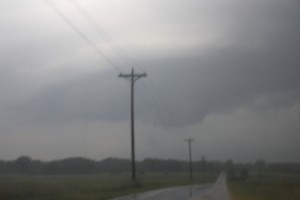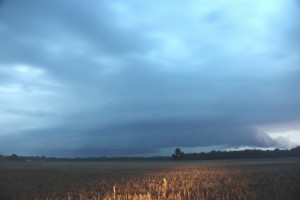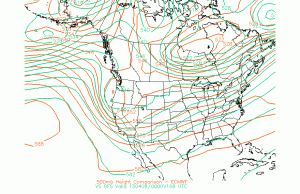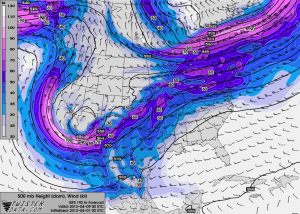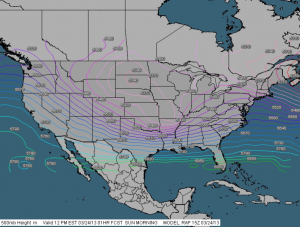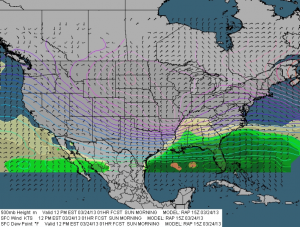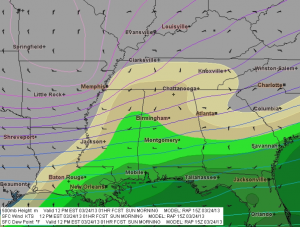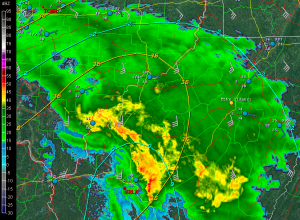Before I launch into the topic of this post–a quick tip of the hat to Big Band Nouveau for Thursday night’s outstanding performance at The B.O.B. in downtown Grand Rapids. I think this was our best show yet. The guys were simply scorching those charts, and the crowd was hugely responsive. A standing ovation is a pretty good indication that we’re doing something right. Mike Doyle deserves major props for having the vision to pull together some outstanding musicians in a creative effort of such high caliber. Thanks to Mike, and thanks to all the cats. You guys rock to the third order!
With that said, I turn my attention to tonight’s feature: Bb7. Yes, Bb7–or really, the key of Eb major. I just happened to be hashing it out via its dominant chord during my practice session earlier this evening. I’ve been hammering on that key lately because two of my solo numbers in Big Band Nouveau modulate briefly to Eb major, and I want to do more than just get by in those sections. I want to play the crap out of them. And the way to do that is to saturate myself in the key of Eb.
I’ve written previously about key saturation. The idea is to steep yourself in a key in as many ways as you can think of until you know it inside and out. Until you own it. And you own it when you hear it in your head and feel it in your fingers.
Every key has its own feel on the saxophone. Most of us get the feel of certain keys early on. As an alto player, I’m quite comfortable in the keys of D and G, and, to a slightly lesser extent, E and A. I’m also comfortable in C and F, and of course, a number of minor keys. And I can get by decently in all the remaining keys, both major and minor, some moreso than others.
But my fingers know the feel of just a select few keys in a way that I would describe as intimate.
Why is that? After all, there are only twelve tones that a musician has to deal with.
True. But those twelve tones relate to each other in entirely different ways from one key to the next. F# is not just F#.
- In the key of D, it is the third of the tonic chord.
- In the key of G, it is the seventh.
- In B, it is the fifth.
- In C, it is the augmented fourth; in Eb, it is the sharp two; and in both of these keys, it is a non-diatonic tone.
- And let’s not forget the obvious: in F#, it is the root.
And that is just how F# relates to the tonic chord. There are six other chords besides in every major scale, not to mention various harmonic formulae, many of which include altered and borrowed chords. And F# has a unique relationship with all of them.
Your fingers feel each of those functions of F# differently, and some functions may be more familiar to your muscle memory than others. Your fingers may, through constant use, know exactly what to do with F# in the key of G, know how to get onto it and off of it from and in every direction and use it in all sorts of creative ways.
But move the key center a tritone to C# and now how familiar are you with that same F#? It has become a completely different animal, and your fingers may not know its feel. The note that you felt utterly at home with in one key can seem like a complete stranger in another. And while it’s true that certain keys get used far more than others, ultimately you want both your fingers and your mind to instinctively know how to treat every one of the twelve notes in the chromatic scale in all twelve major and all twelve minor keys.
The way to achieve that goal is key saturation. I’ve already offered some good suggestions on how to approach the saturation technique in another post, so there’s no need for me to repeat myself here. My point is simply to mention that every key has a feel that is all its own, and it behooves you and me to master all twenty-four of those “feels.”
Yes, it’s a big task. But it’s also a fun one. Just pick a key and work at it. Mine right now is Eb. I find myself focusing especially on the third and seventh of the major chord and the seventh of the dominant chord–G, D, and Ab, respectively. Once I become conversant with those notes in any key, the other notes–both diatonic and non-diatonic–all seem to fall into place.
Okay, enough for tonight. It’s after one o’clock in the morning, and I’m getting sleepy. The rest is up to you.
